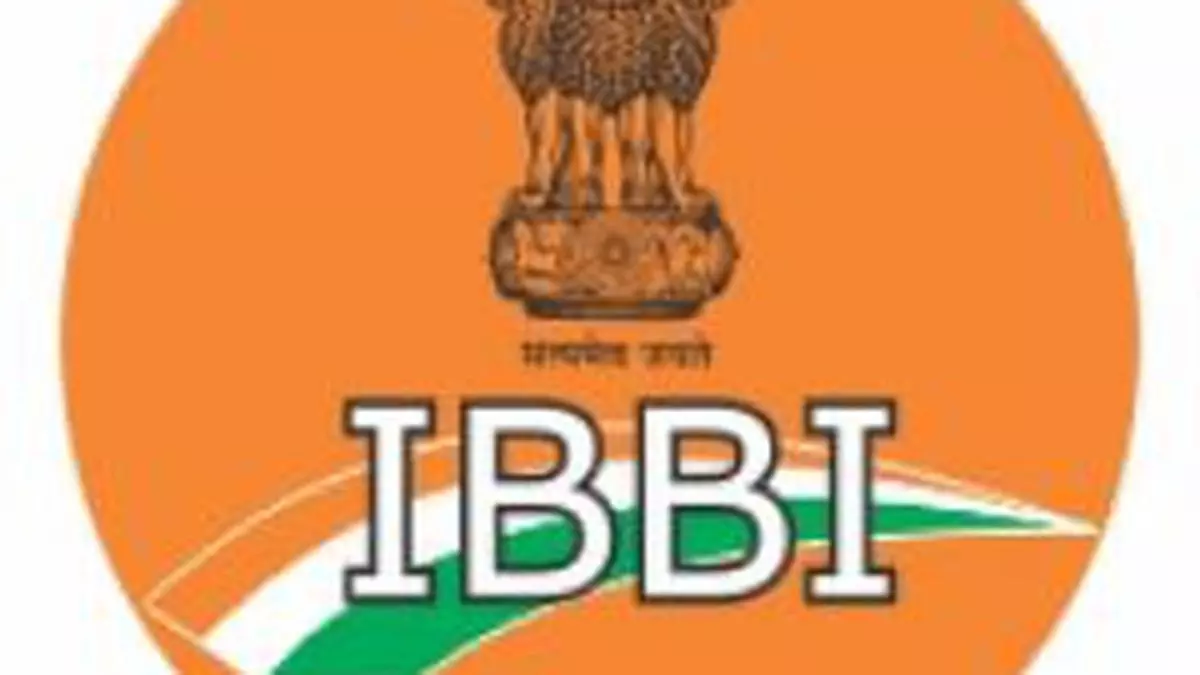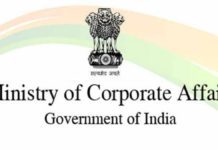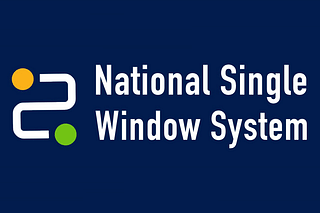Vallal RCK Vs Siva Industries and Holdings Limited And Ors. (Supreme Court Of India)
The Supreme Court on Friday said it has time and again emphasised that there is need for minimal judicial interference by the National Company Law Appellate Tribunal (NCLAT) and the National Company Law Tribunal (NCLT) in the framework of the Insolvency and Bankruptcy Code (IBC).
THE SUPREME COURT bench of Justices B.R. Gavai and Hima Kohli said: “When 90 per cent and more of the creditors, in their wisdom after due deliberations, find that it will be in the interest of all the stake holders to permit settlement and withdraw CIRP (Corporate Insolvency Resolution Process), in our view, the adjudicating authority or the appellate authority cannot sit in an appeal over the commercial wisdom of CoC (committee of creditors).”
BRIEF FACTS:
1. IDBI Bank Limited had filed an application under Section 7 of the IBC seeking initiation of Corporate Insolvency Resolution Process (CIRP) against M/s Siva Industries and Holdings Limited (Corporate Debtor).
2. On 04.07.2019, the application was admitted by the NCLT and CIRP was initiated.
3. The Resolution Professional (RP) presented a resolution plan before the CoC which was not approved as it did not receive 66% votes, as per the requirement of the statue.
4. The RP filed an application for initiating liquidation.
5. Subsequently, Mr. Vallal Rck, the promoter of the Corporate Debtor filed a settlement application under Section 60(5) of IBC to offer a one-time settlement plan.
ADJUDICATING AUTHORITY FOR CORPORATE PERSONS
SECTION 60 (5) Notwithstanding anything to the contrary contained in any other law for the time being in force, the National Company Law Tribunal shall have jurisdiction to entertain or dispose of—
(a) any application or proceeding by or against the corporate debtor or corporate person;
(b) any claim made by or against the corporate debtor or corporate person, including claims by or against any of its subsidiaries situated in India; and
(c) any question of priorities or any question of law or facts, arising out of or in relation to the insolvency resolution or liquidation proceedings of the corporate debtor or corporate person under this Code.
6. Thereafter, the CoC considered the Settlement plan in its 13th , 14th and 15th meeting held between October and December, 2020.
7. The final settlement proposal was submitted by the promoter and was considered by the CoC on 18.01.2021.
8. Ultimately, the settlement plan was approved on 01.04.2021.
9. Consequently, the RP filed an application seeking withdrawal of CIRP.
10. However, the NCLT rejected the said application stating that the Settlement Plan was only a Business Restructuring Plan. Moreover, it initiated the liquidation process.
11. The appeal filed before NCLAT was dismissed.
12. The learned council for appellant , appearing on behalf of the promoter of the Corporate Debtor argued that neither the adjudicating authority nor appellant authority can sit in an appeal over the commercial wisdom of the CoC, which had accepted the Settlement Plan by 94.32% voting share. He emphasized that the impugned orders are in the teeth of the object of IBC,2016 to permit the Corporate Debtors as going concern, while clearing the dues to the best of its ability.
SECTION 12A OF IBC,2016-The Adjudicating Authority may allow the withdrawal of application admitted under section 7 or section 9 or section 10, on an application made by the applicant with the approval of ninety per cent., voting share of the committee of creditors, in such manner as may be prescribed.
THE OBSERVATIONS AND DECISION OF SUPREME COURT OF INDIA
13. Referring to Section 12A, which deals with withdrawal of applications admitted under Section 7, 9 or 10, the Court noted that the provision was inserted by way of the Insolvency and Bankruptcy Code (Second Amendment) Act, 2018 , after much deliberation by the Insolvency Law Committee. The Committee had recommended that an exit should be allowed provided the CoC approves it by 90% voting share. The recommendation reads as under –
“(vii) in order to cater to exceptional circumstances warranting withdrawal of an application for CIRP post¬ admission, it has been recommended to all allow such exit provided the CoC approves such action by ninety per cent of voting share.”
14. The Court observed that the recommendation was made as the Committee reckoned that the intent of the IBC is to discourage individual actions for enforcement and settlement. In the light of the same, it had opined that the settlement may be reached amongst all creditors and the debtor, for the purpose of a withdrawal to be granted. Pursuant to the insertion of Section 12A in the IBC, Regulation 30A was added to the Regulations, 2016 which lays down the detailed procedure for withdrawal of application.
15. It was further noted that in Swiss Ribbons Private Limited And Anr. v. Union of India And Ors., validity of Section 12A was upheld. Moreover ,considering that a catena of judgments of the Apex Court had already held that commercial wisdom of CoC is not to be interfered with by NCLT and NCLAT, it opined-
“When 90% and more of the creditors, in their wisdom after due deliberations, find that it will be in the interest of all the stake¬holders to permit to settlement and withdrawal of CIRP, in our view , the adjudicating authority or appellate authority cannot sit in an appeal over the commercial wisdom of Committee of Creditors. The interference would be warranted only when the adjudicating authority or the appellate authority finds the decision of CoC to be capricious , arbitrary ,irrational and de hors the provisions of the statute of the Rules.”
CONCLUSION- the Preamble of IBC,2016 says that –
“ An Act to consolidate and amend the laws relating to reorganization and insolvency resolution of corporate persons, partnership firms and individuals in a time bound manner for maximization of value of assets of such persons, to promote entrepreneurship, availability of credit and balance the interests of all the stakeholders including alteration in the order of priority of payment of Government dues and to establish an Insolvency and Bankruptcy Board of India, and for matters connected therewith or incidental thereto.”
The main purpose of the Code,2016 is to resolve disputes of Corporate Debtors through re-organization and resolution process and keep the corporate debtor as a going concern. The liquidation of a Corporate Debtor is the last stage ,when all resolution process fails and there is not hope of getting better plan than liquidation.
In a case when there is a better plan exist to run business of the Corporate Debtor and same has been approved by the majority of Committee of Creditors ,then it is duty of Adjudicating Authority or the Appellate Authority not to interfere the decision of COC.
FULL TEXT OF THE SUPREME COURT JUDGMENT/ORDER
1. These appeals challenge the common judgment dated 28th January 2022 passed by the learned National Company Law Appellate Tribunal, Chennai Bench, Chennai (hereinafter referred to as the “NCLAT”) in Company Appeal (AT)(CH)(Insolvency) Nos. 211 and 212 of 2021, thereby dismissing the appeals filed by the present appellant, which were in turn filed, challenging the two orders dated 12th August 2021 passed by the learned National Company Law Tribunal, Division BenchII, Chennai (hereinafter referred to as the “NCLT”), thereby rejecting the application filed by the Resolution Professional (“RP” for short) under Section 12A of the Insolvency and Bankruptcy Code, 2016 (“IBC” for short) read with Regulation 30A of the Insolvency and Bankruptcy Board of India (Insolvency Resolution Process for Corporate Persons) Regulations, 2016 (hereinafter referred to as the “2016 Regulations”), for withdrawal of the application filed under Section 7 of the IBC in view of the Settlement Plan submitted by the appellant. The appellant has also challenged the order passed by the learned NCLAT of the even date vide which the appeal filed by the present appellant against the order passed by the learned NCLT directing initiation of liquidation proceedings in respect of M/s Siva Industries and Holdings Limitedrespondent No.1 herein (hereinafter referred to as the “Corporate Debtor”), was dismissed.
2. A short question that falls for consideration in the present appeal is as to whether the adjudicating authority (NCLT) or the appellate authority (NCLAT) can sit in an appeal over the commercial wisdom of the Committee of Creditors (hereinafter referred to as the “CoC”) or not.
3. The facts in brief giving rise to the present appeals are as under:
IDBI Bank Limited had filed an application under Section 7 of the IBC for initiation of Corporate Insolvency Resolution Process (hereinafter referred to as the “CIRP”) in respect of the Corporate Debtor. The learned NCLT, vide its order dated 4th July 2019, admitted the said application. As a result of which, CIRP in respect of the Corporate Debtor was initiated. The RP had presented a Resolution Plan before the CoC, submitted by one M/s Royal Partners Investment Fund Limited. However, since the said Plan received only 60.90% votes of the CoC and could not meet the requirement of receiving 66% votes, the said Plan could not be approved.
4. The RP, on 8th May 2020, filed an application being IA/837/IB/2020 under Section 33(1)(a) of the IBC seeking initiation of liquidation process of the Corporate Debtor. The appellant, who is the promoter of the Corporate Debtor, filed a settlement application being IA/647/IB/2020 before the NCLT under Section 60(5) of the IBC, showing his willingness to offer onetime settlement plan. The appellant sought necessary directions to the CoC to consider the terms of Settlement Plan as proposed by him. From the month of October to December 2020, the 13th, 14th and 15th meetings of the CoC were held to consider the Settlement Plan as submitted by the appellant. Deliberations took place in the said meetings with regard to the said Settlement Plan and the final settlement proposal which was submitted by the appellant came to be considered by the CoC in its 16th meeting held on 18th January 2021. Initially, the said Settlement Plan received only 70.63% votes. However subsequently, one of the Financial Creditors viz. International Assets Reconstruction Co. Ltd. (hereinafter referred to as “IARCL”) having voting share of 23.60%, decided to approve the said Settlement Plan and intimated the RP about the same.
5. Since the said Settlement Plan stood approved by more than 90% voting share, the RP filed an application before the learned NCLT seeking necessary directions based on the request of IARCL. Vide its order dated 29th March 2021, the learned NCLT ordered the RP to reconvene a meeting of CoC and place the email of IARCL before it. Accordingly, the 17th CoC meeting was convened on 1st April 2021, wherein the said Settlement Plan was approved with a voting majority of 94.23%. Accordingly, the RP filed an application being MA/43/CHE/2021 in IBA/453/2019 before the learned NCLT seeking withdrawal of CIRP initiated against the Corporate Debtor in view of the approval of the said Settlement Plan by CoC.
6. The learned NCLT, vide its order dated 12th August 2021, while holding that the said Settlement Plan was not a settlement simpliciter under Section 12A of the IBC but a “Business Restructuring Plan”, rejected the application for withdrawal of CIRP and approval of the Settlement Plan. Vide another order of even date, the learned NCLT initiated liquidation process of the Corporate Debtor in IA/837/IB/2020 as well. Being aggrieved thereby, the appellant preferred two appeals before the learned NCLAT.
Vide the common impugned judgment dated 28th January 2022, the same came to be dismissed. Hence, the present appeals.
7. Notice was issued by this Court in the present appeals on 11th March 2022. While issuing notice, this Court also granted stay of the impugned judgment. Insofar as the respondent No.1 is concerned, no one appeared. Shri Abhishek Swaroop, learned counsel appearing on behalf of the respondent No.2 also does not wish to contest the matter. As such, we could have very well allowed the appeals as being uncontested. However, since an important question with regard to interpretation of Section 12A of the IBC arises, we are inclined to consider the matter for deciding the said issue.
8. We have heard Dr. Abhishek Manu Singhvi, learned Senior Counsel appearing on behalf of the appellant.
9. Dr. Singhvi submits that it is more than wellsettled that the adjudicating authority or the appellate authority cannot sit in an appeal over the commercial wisdom of CoC.
He submitted that the CoC, having accepted the Settlement Plan with the voting majority of 94.23%, the learned NCLT and the learned NCLAT have grossly erred in rejecting the Settlement Plan and withdrawal of CIRP.
10. Dr. Singhvi submitted that one of the main objects of the IBC is permitting the Corporate Debtor to continue as an ongoing concern and at the same time, paying the dues of the creditors to the maximum. He submits that the impugned judgment dated 28th January 2022 passed by the learned NCLAT and the orders dated 12th August 2021 passed by the learned NCLT are totally contrary to the spirit behind the IBC.
11. For considering these submissions, it will be apposite to refer to Section 12A of the IBC, which reads thus:
“12A. Withdrawal of application admitted under Section 7, 9 or 10.—The Adjudicating Authority may allow the withdrawal of application admitted under Section 7 or Section 9 or Section 10, on an application made by the applicant with the approval of ninety per cent. voting share of the committee of creditors, in such manner as may be specified.”
12. It is relevant to note that Section 12A of the IBC was brought in the statute book vide Insolvency and Bankruptcy Code (Second Amendment) Act, 2018 (Act No. 26 of 2018). The Statement of Objects and Reasons (for short “SOR”) of the Act No. 26 of 2018 would reveal that after the IBC was enacted in 2016, it had emerged that further fine tuning of the IBC would be required. The Government therefore constituted an Insolvency Law Committee (hereinafter referred to as the “said Committee”) to review the functioning and implementation of the IBC. The SOR would further reveal that the recommendations of the said Committee were examined by the Government and it was accordingly decided to amend the IBC. One of the amendments proposed was for making a provision for withdrawal of application for initiation of CIRP admitted by Adjudicating Authority. It was recommended that such an exit should be allowed provided the CoC approves such action by 90% voting share.
13. It will be relevant to refer to Clause (vii) of the key recommendations in the Report of the said Committee dated 26th March 2018, which reads thus:
“(vii) in order to cater to exceptional circumstances warranting withdrawal of an application for CIRP postadmission, it has been recommended to allow such exit provided the CoC approves such action by ninety per cent of voting share;”
14. It will also be relevant to refer to paragraph (29) of the Report of the said Committee, which reads thus:
“29. WITHDRAWAL OF CIRP PROCEEDINGS PURSUANT TO SETTLEMENT
29.1 Under rule 8 of the CIRP Rules, the NCLT may permit withdrawal of the application on a request by the applicant before its admission. However, there is no provision in the Code or the CIRP Rules in relation to permissibility of withdrawal post admission of a CIRP application. It was observed by the Committee that there have been instances where on account of settlement between the applicant creditor and the corporate debtor, judicial permission for withdrawal of CIRP was granted. This practice was deliberated in light of the objective of the Code as encapsulated in the BLRC Report, that the design of the Code is based on ensuring that “all key stakeholders will participate to collectively assess viability. The law must ensure that all creditors who have the capability and the willingness to restructure their liabilities must be part of the negotiation process. The liabilities of all creditors who are not part of the negotiation process must also be met in any negotiated solution.” Thus, it was agreed that once the CIRP is initiated, it is no longer a proceeding only between the applicant creditor and the corporate debtor but is envisaged to be a proceeding involving all creditors of the debtor. The intent of the Code is to discourage individual actions for enforcement and settlement to the exclusion of the general benefit of all creditors.
29.2 On a review of the multiple NCLT and NCLAT judgments in this regard, the consistent pattern that emerged was that a settlement may be reached amongst all creditors and the debtor, for the purpose of a withdrawal to be granted, and not only the applicant creditor and the debtor. On this basis read with the intent of the Code, the Committee unanimously agreed that the relevant rules may be amended to provide for withdrawal post admission if the CoC approves of such action by a voting share of ninety per cent. It was specifically discussed that rule 11 of the National Company Law Tribunal Rules, 2016 may not be adopted for this aspect of CIRP at this stage (as observed by the Hon’ble Supreme Court in the case of Uttara Foods and Feeds Private Limited v. Mona Pharmacem) and even otherwise, as the issue can be specifically addressed by amending rule 8 of the CIRP Rules.”
15. It could thus be seen from the Report of the said Committee that, the said Committee had observed that there have been instances where on account of settlement between the applicant creditor and the corporate debtor, judicial permission for withdrawal of CIRP was granted. The Report would further reveal that it refers to Banking Law Reforms Committee Report which emphasizes that the law must ensure that all creditors who have the capability and the willingness to restructure their liabilities must be part of the negotiation process. It also emphasizes that the liabilities of all creditors who are not part of the negotiation process must also be met in any negotiated solution. The said Committee states that once the CIRP is initiated, it is no longer a proceeding only between the applicant creditor and the corporate debtor but is envisaged to be a proceeding involving all creditors of the debtor. The intent of the IBC is to discourage individual actions for enforcement and settlement to the exclusion of the general benefit of all creditors. The Report would further reveal that a settlement may be reached amongst all creditors and the debtor, for the purpose of a withdrawal to be granted, and not only the applicant creditor and the debtor. The said Committee therefore recommended that the relevant rules may be amended to provide for withdrawal post admission if the CoC approves of such action by a voting share of ninety per cent.
16. It could thus be seen that Section 12A of the IBC was brought in the statute book on the basis of the said Committee’s Report. It could be noticed that though by the Amendment Act No. 26 of 2018, the voting share of 75% of CoC for approval of the Resolution Plan was brought down to 66%, Section 12A of the IBC which was brought in the statute book by the same amendment, requires the voting share of 90% of CoC for approval of withdrawal of CIRP. It could thus clearly be seen that a more stringent provision has been made insofar as withdrawal of CIRP is concerned.
17. It is further to be noted that after Section 12A of the IBC was brought in the statute book, Regulation 30A of the 2016 Regulations came to be inserted vide notification dated 3rd July 2018. The same came to be substituted vide notification dated 25th July 2019. Regulation 30A of the 2016 Regulations reads thus:
“30A. Withdrawal of application.—(1) An application for withdrawal under Section 12A may be made to the Adjudicating Authority—
(a) before the constitution of the committee, by the applicant through the interim resolution professional;
(b) after the constitution of the committee, by the applicant through the interim resolution professional or the resolution professional, as the case may be:
Provided that where the application is made under clause (b) after the issue of invitation for expression of interest under Regulation 36A, the applicant shall state the reasons justifying withdrawal after issue of such invitation.
(2) The application under subregulation (1) shall be made in Form FA of the Schedule accompanied by a bank guarantee—
(a) towards estimated expenses incurred on or by the interim resolution professional for purposes of Regulation 33, till the date of filing of the application under clause (a) of subregulation (1); or
(b) towards estimated expenses incurred for purposes of clauses (aa), (ab), (c) and (d) of Regulation 31, till the date of filing of the application under clause (b) of subregulation (1).
(3) Where an application for withdrawal is under clause (a) of subregulation (1), the interim resolution professional shall submit the application to the Adjudicating Authority on behalf of the applicant, within three days of its receipt.
(4) Where an application for withdrawal is under clause (b) of subregulation (1), the committee shall consider the application, within seven days of its receipt.
(5) Where the application referred to in subregulation (4) is approved by the committee with ninety percent voting share, the resolution professional shall submit such application along with the approval of the committee, to the Adjudicating Authority on behalf of the applicant, within three days of such approval.
(6) The Adjudicating Authority may, by order, approve the application submitted under subregulation (3) or (5).
(7) Where the application is approved under subregulation (6), the applicant shall deposit an amount, towards the actual expenses incurred for the purposes referred to in clause (a) or clause (b) of subregulation (2) till the date of approval by the Adjudicating Authority, as determined by the interim resolution professional or resolution professional, as the case may be, within three days of such approval, in the bank account of the corporate debtor, failing which the bank guarantee received under subregulation (2) shall be invoked, without prejudice to any other action permissible against the applicant under the Code.”
18. A perusal of the said Regulation would reveal that where an application for withdrawal under Section 12A of the IBC is made after the constitution of the Committee, the same has to be made through the interim resolution professional or the resolution professional, as the case may be. The application has to be made in FormFA. It further provides that when an application is made after the issue of invitation for expression of interest under Regulation 36A, the applicant is required to state the reasons justifying withdrawal of the same. The RP is required to place such an application for consideration before the Committee. Only after such an application is approved by the Committee with 90% voting share, the RP shall submit the same along with the approval of the Committee to the adjudicating authority. It could thus be seen that a detailed procedure is prescribed under Regulation 30A of the 2016 Regulations as well.
19. In the case of Swiss Ribbons Privated Limited and Another v. Union of India and Others1, one of the challenges made was with regard to validity of Section 12A of the IBC. It was argued that the figure of 90% voting share was arbitrary. It was the contention that though the withdrawal was just and proper, the CoC could exercise the power arbitrarily to reject such a settlement. While rejecting the said contention, this Court observed thus:
“83. The main thrust against the provision of Section 12A is the fact that ninety per cent of the Committee of Creditors has to allow withdrawal. This high threshold has been explained in the ILC Report as all financial creditors have to put their heads together to allow such withdrawal as, ordinarily,an omnibus settlement involving all creditors ought, ideally, to be entered into. This explains why ninety per cent, which is substantially all the financial creditors, have to grant their approval to an individual withdrawal or settlement. In any case, the figure of ninety per cent, in the absence of anything further to show that it is arbitrary, must pertain to the domain of legislative policy, which has been explained by the Report (supra). Also, it is clear, that under Section 60 of the Code, the Committee of Creditors do not have the last word on the subject. If the Committee of Creditors arbitrarily rejects a just settlement and/or withdrawal claim, NCLT, and thereafter, NCLAT can always set aside such decision under Section 60 of the Code. For all these reasons, we are of the view that Section 12A also passes constitutional muster.”
20. It could thus be seen that this Court has found that if the CoC arbitrarily rejects a just settlement and/or withdrawal claim, the learned NCLT and thereafter the learned NCLAT can always set aside such decision under the provisions of the IBC.
21. This Court has consistently held that the commercial wisdom of the CoC has been given paramount status without any judicial intervention for ensuring completion of the stated processes within the timelines prescribed by the IBC. It has been held that there is an intrinsic assumption, that financial creditors are fully informed about the viability of the corporate debtor and feasibility of the proposed resolution plan. They act on the basis of thorough examination of the proposed resolution plan and assessment made by their team of experts. A reference in this respect could be made to the judgments of this Court in the cases of K. Sashidhar v. Indian Overseas Bank and Others2, Committee of Creditors of Essar Steel India Limited through Authorised Signatory v. Satish Kumar Gupta and Others3, Maharashtra Seamless Limited v. Padmanabhan Venkatesh and Others4, Kalpraj Dharamshi and Another v. Kotak Investment Advisors Limited and Another5, and Jaypee Kensington Boulevard Apartments Welfare Association and Others v. NBCC (India) Limited and Others6.
22. No doubt that the aforesaid observations have been made by this Court while considering the powers of the CoC while granting its approval to the Resolution Plan.
23. As already stated hereinabove, the provisions under Section 12A of the IBC have been made more stringent as compared to Section 30(4) of the IBC. Whereas under Section 30(4) of the IBC, the voting share of CoC for approving the Resolution Plan is 66%, the requirement under Section 12A of the IBC for withdrawal of CIRP is 90%.
24. When 90% and more of the creditors, in their wisdom after due deliberations, find that it will be in the interest of all the stakeholders to permit settlement and withdraw CIRP, in our view, the adjudicating authority or the appellate authority cannot sit in an appeal over the commercial wisdom of CoC. The interference would be warranted only when the adjudicating authority or the appellate authority finds the decision of the CoC to be wholly capricious, arbitrary, irrational and de hors the provisions of the statute or the Rules.
25. In the present case, the proceedings of the 13th, 14th and 15th meetings of CoC would clearly show that there were wide deliberations amongst the members of the CoC while considering the Settlement Plan as submitted by the appellant. Not only that, the proceedings would also reveal that after suggestions were made by some of the members of the CoC, suitable amendments were carried out in the Settlement Plan by the appellant. One of the members of the CoC having voting share of 23.60%, though initially opposed the Settlement Plant, subsequently decided to support the same. Accordingly, the NCLT itself, vide order dated 29th March 2021, directed the RP to reconvene the CoC meeting. As per the directions of the NCLT, on 1 st April 2021, the 17th meeting of the CoC was reconvened, wherein the Settlement Plan was approved by 94.23% votes.
26. It is thus clear that the decision of the CoC was taken after the members of the CoC, had due deliberation to consider the pros and cons of the Settlement Plan and took a decision exercising their commercial wisdom. We are therefore of the considered view that neither the learned NCLT nor the learned NCLAT were justified in not giving due weightage to the commercial wisdom of CoC.
27. This Court has, time and again, emphasized the need for minimal judicial interference by the NCLAT and NCLT in the framework of IBC. We may refer to the recent observation of this Court made in the case of Arun Kumar Jagatramka v. Jindal Steel and Power Limited and Another7:
“95. ….However, we do take this opportunity to offer a note of caution for NCLT and NCLAT, functioning as the adjudicatory authority and appellate authority under the IBC respectively, from judicially interfering in the framework envisaged under the IBC. As we have noted earlier in the judgment, the IBC was introduced in order to overhaul the insolvency and bankruptcy regime in India. As such, it is a carefully considered and well thought out piece of legislation which sought to shed away the practices of the past. The legislature has also been working hard to ensure that the efficacy of this legislation remains robust by constantly amending it based on its experience. Consequently, the need for judicial intervention or innovation from NCLT and NCLAT should be kept at its bare minimum and should not disturb the foundational principles of the IBC…”
28. In the result, we pass the following order:
(i) The appeals are allowed;
(ii) The impugned judgment dated 28th January 2022 delivered by the learned NCLAT in Company Appeal (AT)(CH)(Insolvency) Nos. 211 and 212 of 2021 and the orders dated 12th August 2021 passed by the learned NCLT in MA/43/CHE/2021 in IBA/453/2019 and in IA/837/IB/2020 in IBA/453/2019 are quashed and set aside; and
(iii) The application bearing No. MA/43/CHE/2021 in IBA/453/2019 filed by the Resolution Professional before the learned NCLT for withdrawal of CIRP is allowed.
29. Pending application(s), if any, shall stand disposed of in the above terms. No order as to costs.



















